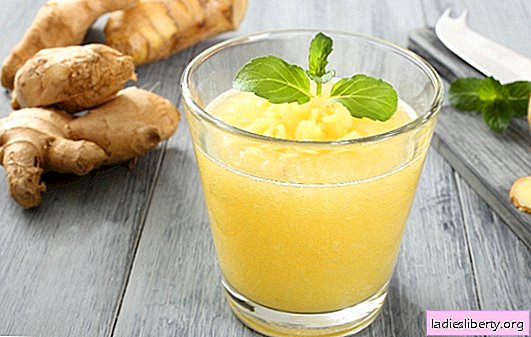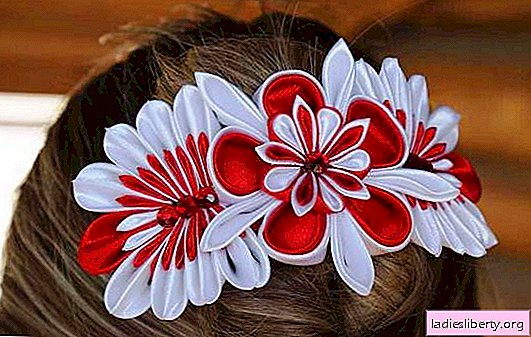
Keeping ducks is usually aimed at getting meat. The resulting product is superior in fat content to chicken. It is more fibrous and has its own unique taste.
In addition to meat, ducks also get eggs, but due to the peculiarity of taste, they are practically not used for nutrition.
They are used for incubation and reproduction of offspring.
The next product obtained from ducks is duck down. Its traditional use is the filling of pillows, blankets, feather-beds.
Duck droppings are a wonderful fertilizer for vegetables and flowers.
The main breeds of ducks and their characteristics
For breeding ducks at home usually use meat breeds. The most common breed is Beijing.
The meat of this breed is usually fatty. The weight of the duck - Peking is up to 3 kilograms, the drake is up to Egg production - up to 150 eggs per year.
The advantages of this breed are:
- rapid maturation to commodity conditions,
- resistance to cold,
- Good genetics and, accordingly, immunity to major diseases.
But there are not many shortcomings:
- require compliance with certain conditions of detention,
- they are noisy!
Another common breed is indo (she’s a musky duck). Individuals of this breed are larger (up to 5 - 6 kilograms), and their meat is less fat. Indians are quieter and less susceptible to common bird infections.
Another popular breed for home maintenance is the Mulard hybrid. Its advantage is a quick set of marketable weight, and the disadvantage, like all hybrids, is the lack of offspring.
Duck rooms
Almost any room can serve as a bird house. The main requirement is the preservation of heat in the winter and the provision of comfortable coolness in the summer. The most common material for building a house is wood. There should be no drafts in the house. A high floor (up to a quarter meter) will not allow the penetration of rodents. Litter should be dry. As a material, straw, woodworking waste (shavings) can be used.
Special requirements are imposed on the maintenance of an egg-bearing bird:
- the room temperature in winter is not lower than 5 degrees,
- good ventilation
- artificial increase in daylight hours.
Compliance with these conditions will help maintain high egg production in the winter. This is especially true of the light mode.
An aviary is being constructed for walking the ducks. For him use a metal mesh - netting. The optimum height of the hedge is up to one meter. Walking is carried out year-round. Limitation: strong wind and temperature below 10 degrees. In dry weather, without wind, ducks can be outdoors all day, even in winter. Housekeeping and ventilation should be carried out daily.
Required Inventory
The main equipment used on the farm is feeders, drinking bowls and nests. Feeding troughs and drinking bowls can be bought both industrially manufactured and made by oneself. The main requirement for the feeder is a sufficient height that limits the penetration of the bird inside. It is optimal if there are cells for mineral additives in the feeder. The drinker should be quite comfortable and roomy. The daily water norm is in the region of half a liter. Egg laying nests are set up in the darkest and quietest places in the house. For the manufacture of nests using plywood. Typically, the size of the nest is about 40 - 50 centimeters. Norm of nests: 1 nest for 3 to 4 birds. Eggs from nests are collected after the bird is released for a morning walk.
Poultry selection in the parent flock and its egg laying requirements
The main criteria for selecting a bird for a tribe are mass and plumage. To form the parent herd, individuals of approximately the same mass and the same age are selected. One drake should account for up to 7 ducks. Ducklings - hybrids should not participate in the formation of the parent herd because of their inability to reproduce.
The selection is carried out by appearance: the bird should look healthy, mobile and have a proportional development. With a properly formed parent herd and compliance with the conditions of detention, the first egg laying can be obtained before reaching the age of 14 months. Vitamin - mineral supplements must be present in the diet of poultry.
Laying ducks are usually used up to 6-8 months.
Oviposition is the main stage in breeding.
Consider how to make it as effective as possible.
We increase the lighting in stages, by 20-30 minutes per week, upon reaching the norm - 16 hours. At this point, leave a dim light at night to ensure a resting state of the bird. It is especially necessary to carefully monitor the cleanliness of the house - the litter in the nests should be cleaned regularly.
Egg selection for incubation occurs no later than eight days after the footnote. Egg storage temperature in the range from 8 to 12 degrees. The eggs taken should be free from damage, unpleasant odor and a bluish tinge of the shell.
The latter indicates bacterial activity inside the egg. Such eggs must be removed immediately.
The rate of exit of chickens is 70%.
Incubation or incubation
The signs of a duck ready to incubate are as follows: it has been away from the main group for a long time, sits in a nest for a long time, forms a litter. At this point, you need to lay her eggs. If the duck remains in the nest, then you can organize the masonry. For lining use up to 20 eggs, provided that the bird completely covers them. The hatching period depends on the breed and is: for a Peking duck - 28 days, for an indochka - 35 days.
With artificial incubation, the main requirement is constant ventilation and control. The temperature in the incubator is 37 - 38 degrees until the period of 20 days, then reduced to 30 degrees to stimulate the withdrawal. The incubation period is 25 - 28 days.
After the conclusion, you need to select the strongest ducklings for further breeding. The selection criteria are as follows:
- the feathering is pubescent,
- soft stomach, lack of bleeding in the umbilical cord,
- weight not lower than 50 grams.
In this way, young growth selected in this way will make it possible to form a good parent flock.
Growing young
In the first weeks of keeping ducklings, temperature and lighting conditions are of particular importance.
The temperature regime is 20 - 22 degrees. Lighting is turned on for a period of up to 22 hours, with a phased bringing to normal - 14 hours.
The diet is approximately the following: boiled eggs, vitamin - mineral supplements, mixes based on meat broths and milk.
The frequency of food intake is up to 7 times a day in the first week with a gradual decrease to three times a day.











